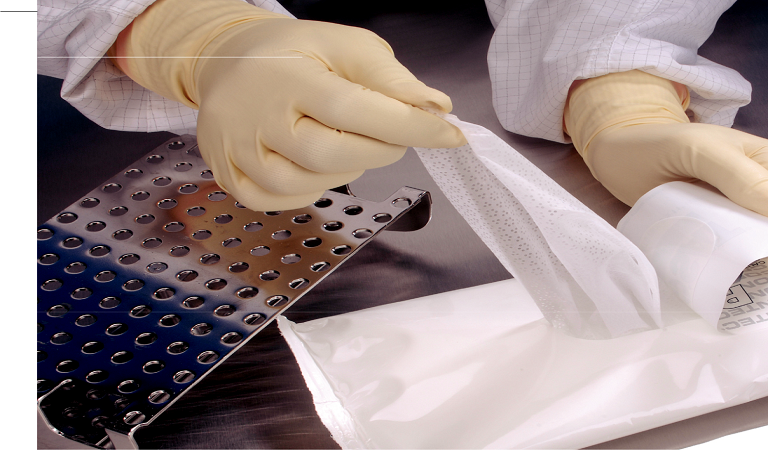- Case study – re-engineering a highly potent API facility
- Calibration variability can affect particle counting performance
- UV light is an efficient means of disinfecting food packaging
SUCCESSFUL SURFACE CLEANING WITH WIPES
18 November 2019
Category: General Info

Studies have shown that wiping is the most effective method of cleanroom surface cleaning. Presaturated wipes in particular are highly suitable for capturing and removing particles and dirt, disturbing biofilms and removing residues. The removal of particles is especially key, not only to pick up dirt and particles but also to trap them in the wipe and physically remove them from the cleanroom.
The ability of a wipe to retain and remove a particle or fibre depends on the structure of the wipe and the size of the contaminant. Wetting wipes significantly enhances particle entrapment and removal. Some manufacturers have also developed proprietary surface treatments for the dry wipes that enhance particle removal and retention. Particle Attraction Technology (PAT) enhances the ability of the wipe to attract and retain fine particles of less than 10μm. This improves the wipe’s ability to clean surfaces, thereby leaving them cleaner. It is a permanent treatment that molecularly bonds to the fabric fibres and is enhanced in the presence of a solvent. It is most relevant in applications that are sensitive to fine particles.
Various studies demonstrate that wiping with saturated wipes is an effective way to control contamination on a hard surface.1,2 Studies of particle adhesion to surfaces have shown that the predominant force binding particles to a surface is a capillary force.3 The use of a wipe presaturated with a low surface tension fluid, such as alcohol, helps to lower the surface tension of this binding force, facilitating the removal of the particle.
Wetting a wipe further enhances its ability to trap particles. A wetted wipe provides capillary hydroscopic forces via the moisture on the wipe that help to retain the particles removed from the surface on the wipe. Once the wipe is removed from the environment, the particles go with it, resulting in the most effective method for removing particles from a cleanroom surface. The amount of fluid used to pre-wet the wipe is critical; if the wipe is over saturated then particles are redeposited on the surface, simply moved around and not picked up into the wipe.
A further question to be answered is whether it is more efficient to use a wipe that has been pre wetted or a dry wipe that is wet at point of use from a squirt bottle, aerosol or trigger spray. (The terms presaturated, prewetted or pre-impregnated all refer to a wipe that is purchased already wet with a solvent or disinfectant, usually in a pouch or tub that can be resealed.)
Presaturated or dry wipes?
Presaturated wipes can offer many benefits over bottled IPA and dry wipes for cleanroom use. They were first introduced into cleanrooms by Contec in 1988 to reduce solvent utilisation and increase convenience in hand wiping for IBM. Because they provide exceptional solvent control presaturated wipes were soon adopted by the aerospace, semiconductor, automotive and other industries to meet increasingly stringent VOC emission and solvent reduction regulations. However, the medical device industry was one of the quickest adopters of these products as it saw the productivity and process control benefits that the technology offered.
Download PDF Below For More Details
Presaturated or dry wipes?
Presaturated wipes can offer many benefits over bottled IPA and dry wipes for cleanroom use. They were first introduced into cleanrooms by Contec in 1988 to reduce solvent utilisation and increase convenience in hand wiping for IBM. Because they provide exceptional solvent control presaturated wipes were soon adopted by the aerospace, semiconductor, automotive and other industries to meet increasingly stringent VOC emission and solvent reduction regulations. However, the medical device industry was one of the quickest adopters of these products as it saw the productivity and process control benefits that the technology offered.
Download PDF Below For More Details